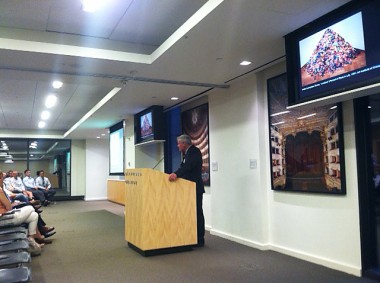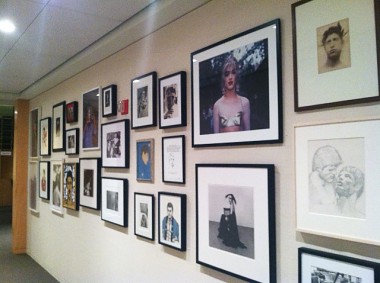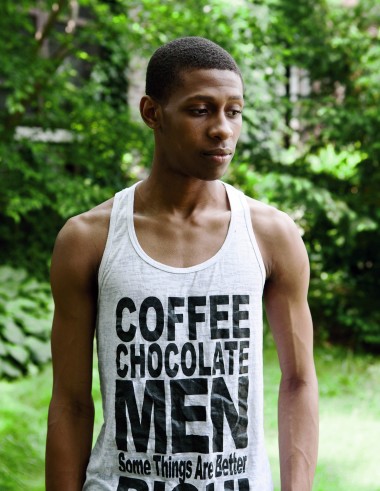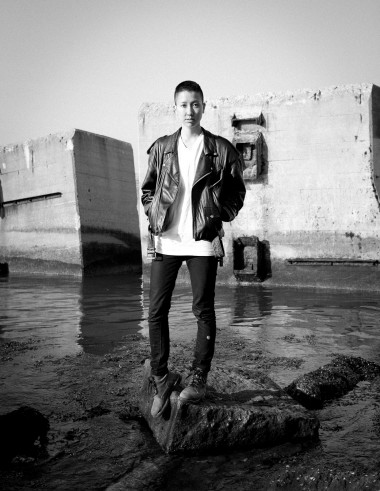Anna, 19, Tuscaloosa, AL
When I was little I wanted to be a boy, and I would call myself Sam. I’d go to Sunday school and people would be like, “Is that a little boy or a little girl?” My mom would be like, “Why does it matter?”
My older sister Genny told me, “Mom and Dad didn’t think you’d be a lesbian. They thought you were going to be transgender.”
As I got older I realized I was comfortable being a female. While researching the gay community, I realized what I was feeling was the butchness of being a lesbian. I like short hair and hate dresses. It’s more of a masculine appearance than a masculine action. If I’m anything, I’m a soft butch. It’s more common here for lesbians to be more feminine. I don’t know if it’s societal or what.
I never try to do anything just to be weird or individual, but people have come up to me and told me I’m brave for dying my hair. I’m like, “Soldiers are brave. Firefighters are brave. I just dye my hair funny colors.” But so many people are scared to do strange things with their appearances.
I started dyeing my hair when I went to high school at the Alabama School of Fine Arts (AFSA). I felt so pent up at middle school. It was all a football culture, and everyone was wearing Abercrombie. It was like the University of Alabama but it didn’t have the small, artsy community to be part of.
I had wanted to be out in middle school, but I was scared because when my girlfriend Brittany first came out teachers had to walk her to class. Brittany and I dated for, like, a month, but I wanted to keep it a secret. I started hearing rumors about us, got ticked about it and broke up with her.
But my high school was such an open place it was easy to be out. You were seen as uncool if you were discriminatory to gay people or if you were really religious. Anything seen as cool in Alabama is seen as weird at ASFA. It was awesome.
When I started high school, I was 14 and shouting that I was a lesbian from the rooftop. I became the big lesbian on campus and the big activist. I helped found the school’s Gay-Straight Alliance and started my school’s participation in National Day of Silence.
I realized I was gay when I was in fourth grade. I had seen a music video for the band t.A.T.u. I looked them up on the Internet. It was the first time I had seen the word “lesbian.” Then I went to a Girl Scout sleepover at the Birmingham Museum of Art, and I had t.A.T.u. written on my hand because I thought writing on my knuckles was really cool. This girl said she really liked them. Then I started staring at her all night. I realized, “I don’t just want to be friends with her. I think I have a crush on her. I think I’m gay.” People say that t.A.T.u. are fake lesbians, but hey, they helped a lot of people!
I came out to my parents and my sister when I was 13, and they have been incredibly supportive. My mom is very active in the community, and she went to Parents, Friends and Family of Lesbians and Gays (PFLAG) meetings. My dad wants to be more of an activist than me. He goes off on anyone who says anything anti-gay. My parents are liberal for Alabama. They met on a Democratic political campaign.
I’m part of the Alabama Safe Schools Coalition, so when I came to the University of Alabama everyone kind of expected me to take a leadership role. And I’m like, “I just got here. Chill.” But I found gay people very quickly. I marched in the homecoming parade with the gay group, Spectrum. We were holding hands so we wouldn’t get separated, and someone wrote a letter to the school paper saying, “I’m a fan of free speech but I don’t want to see guys kissing and holding hands.” And no one was kissing! You can’t kiss and walk at the same time.
But the environment here is surprisingly alright. I haven’t walked around holding a girl’s hand yet, but I’ve had my “Legalize Gay” shirt on. I know there are homophobes because I hear about them, but I think it’s a generally accepting campus.
I’m excited to be here and take courses that will help me have a career in zoo education. My mom forced me to volunteer somewhere in high school since I spent all summer watching TV. My friend volunteered at the zoo, then quit, and I ended up volunteering there for five years. I love pretty much any animal. Except sharks.
When I was in high school, usually when I was with a large group of people my age, we were there to talk about diversity. It was nice that at the zoo, instead of talking about how different we are and how much we loved each other, we were there to talk about the animals.
So many people in my senior class of high school had this drive to get out of Alabama. But I feel like if all the liberal-minded people leave, it’s a haven for bigotry. But I don’t know if I’ll stay in-state after I graduate from college. I want to work in zoo education, and when it comes down to what I want to do, the Montgomery or Birmingham zoos are my only options. Surprisingly, my dream zoo is in San Francisco.
As told to Diana Scholl.
Photo by Laurel Golio, taken in Tuscaloosa, AL, 2010
To tell your story, email hello@wearetheyouth.org
Dohyun, 19, Atlanta, GA
When we moved to America, I tried to become more American. I was born in Korea and we moved to Marietta when I was 10. I have tried to get more into my Korean heritage recently. I’m trying to learn the history and where my family comes from and that sort of thing. I don’t speak Korean very well. I speak barely enough to get through to my parents.
I come from a very, very traditionalist, conservative Korean family. Growing up, I never knew what gay was. The concept was entirely foreign to me. I actually haven’t come out to most of my family. I’m pretty sure if my dad found out, he’d kick me out. My siblings know, I think, but we never talk about it.
I accidentally told my mom during my junior year of high school. I was thinking about it for a while. Then my mom and I were sitting in a room and she’s like, “Do you have something to tell me?” She said it was a phase and it would pass. We’ve never talked about it since. And a lot of tears were shed — by me. I don’t think she cried.
Being at college, away from my parents, is a lot more liberating. It gets a lot more difficult as I get more active in the community.
Ever since I’ve come out, I’ve been very proud of who I am. My first kiss with a guy was the summer after I came out, the summer between sophomore and junior year. A guy who’s now a really good friend of mine. We went out for a week. He didn’t think gay rights were really a thing. I helped him come out of the closet and become more active.
I want to do things for the community. I founded the Gay-Straight Alliance in my high school. There were a few other gay kids. Our GSA was more straight allies than queers, which was interesting.
It’s different here. I got to Emory and realized there’s so much I can do for the community. I really wanted to get my voice out there. There are more gays than I’ve ever met here. It’s refreshing. I never knew there were so many out and proud, active kids around. But still you don’t really see a gay couple holding hands.
I don’t particularly hang out with Korean kids at Emory. They keep to themselves and speak Korean. Also, Asian culture is very homophobic. I don’t know many gay Asians. There’s one person who comes to the Queer Students of Color group on campus, but that’s it.
I definitely want to come out to my parents, but I want to wait until I get a better foothold and can support myself. I’ve mentally dealt with it and made peace with how it is with my parents. But sometimes it’s hard. My home life feels like it’s a lie.
As told to Diana Scholl.
Photo by Laurel Golio, taken in Atlanta, GA, 2010
To tell your story, email hello@wearetheyouth.org
Elliott, 21, Bronx, NY
I’m lucky I already had my kids before I got HIV. I became HIV-positive June 16, 2011, in Florida. It was with a real female and the condom popped. She knew she was HIV-positive but didn’t tell me. I was so angry.
Then I came to New York in August, because it was too slow with the medicine in Tampa. My homeboy said he’d get me one of his private doctors, but then someone told me in New York they have a program to help with benefits.
When I came to New York, my girlfriend Honesty and I were looking for a shelter. I stopped at Housing Works because I heard there was a shelter on Pitkin. I met Johnny and I asked if it was a homeless shelter. He said it was for people with HIV and AIDS, and asked if I was HIV-positive. I said, “Yes, I am.” After my test results came back, he got me signed up for HASA — a program in New York City that provides housing for people with AIDS — to get me into housing and offered me a job. He said I can do outreach to the youth.
My goal is to be an outreach specialist. My Plan B is to drive trucks. My other Plan C is to be a good daddy to my kids. I came a long way from where I was when I was a little boy. My life story is a whole different thing. When you live without a mother and your father passes away when you’re five, staying in the city of Tampa is rough.
I ran away from foster care at the age of 10. I didn’t like my foster care people. They didn’t treat me right. I stayed on the streets, sleeping on benches. How I survived was stealing from Wal-Mart to get clothes and soap to wash my body.
I learned how to sell dope at the age of 11. I didn’t want to sell at the time, but I had to do what I had to do to get my money. After that, I started getting in trouble. I got my first gun, a 9-mm, and started using my gun to break into people’s houses. We used to take the TVs and take them to the pawnshops.
I didn’t care about my life. I didn’t have no family. I didn’t have no brother, I didn’t have a mom, I didn’t have a dad. I kept on going to jail. I went to a juvenile program in Tallahassee at the age of 12.
When I went to jail, my first day in Orlando I got stabbed on the side of the ribs. I did the five years, but it felt like I was doing 20 to 25. I didn’t have nobody to talk to, nobody to send me canteen. It was like gang banging.
I got my GED in prison, because when I was a youngin’ I wasn’t attending school like I was supposed to. But I didn’t want to get locked up again. I didn’t want to be the type of person who keeps coming back.
As told to Diana Scholl.
Photo by Laurel Golio, taken in Brooklyn, NY, 2011
To tell your story, email hello@wearetheyouth.org
Is This Heaven? It’s Iowa
We didn’t know this before last week, but apparently Nebraska and Iowa have a bit of a rivalry. So while our new Nebraska friends had us a bit biased as to what we’d find in the Hawkeye State, we have been impressed!
After a breakfast with Eric in downtown Omaha, we hit the road to Newton, Iowa, where Dana at the Iowa Pride Network, a group that helps students in the state strengthen their gay-straight alliances, connected us with Sam and Ella. Newton Senior High School Gay-Straight Alliance, of which Ella is the president, won the award last year for best GSA in the state!
We heard their amazing stories, and after our interview, they took us on a tour of a town, and we went with them and a friend to Panda Garden, a chinese buffet. Sam had to leave for a band performance, but Ella, a member of the school bowling team, put on her bowling uniform to pose for some photos at the bowling alley that you are going to love. Then we played a game of bowling ourselves. We were not high school bowling team caliber, but had fun.
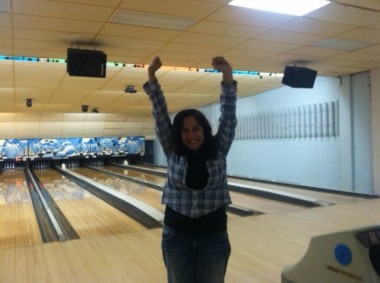
Then we headed to Ottumwa, a town about an hour south of Newton. In the morning we woke up earlier than we are use to to photograph KiRel before he started school. He was really great and friendly, and we wished we had more time to spend with him.
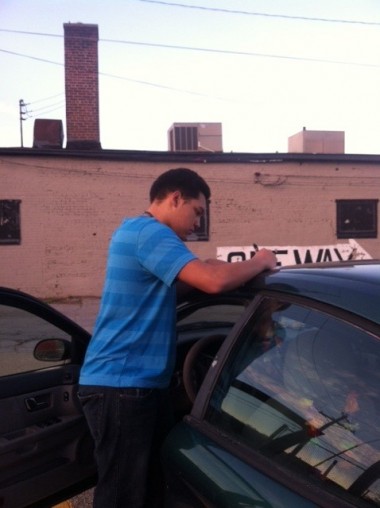
After the hills of Iowa made us glad we love women, and after a quick stop for lunch at Myers Grill & Catering (a great Yelp find), we were off to Iowa City.
In Iowa City, we met with a fantastic group of high school students at United Action for Youth, profiled Jacob, Natasha, and Alex, and had a chance to talk to the great staff at UAY. Thanks Joe for inviting us!
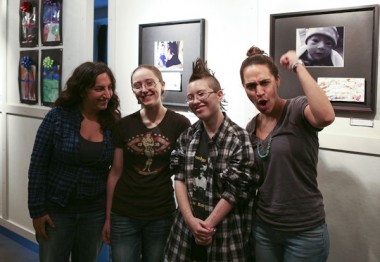
Then after delicious sushi, we went to the Student Union to watch the Presidential Debate, where LGBT rights were absent from the debate again. But at least we got these great t-shirts.
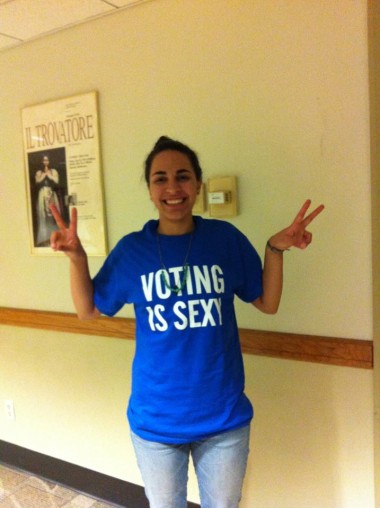
Tomorrow is a driving day. We’ll blog again in Minnesota!
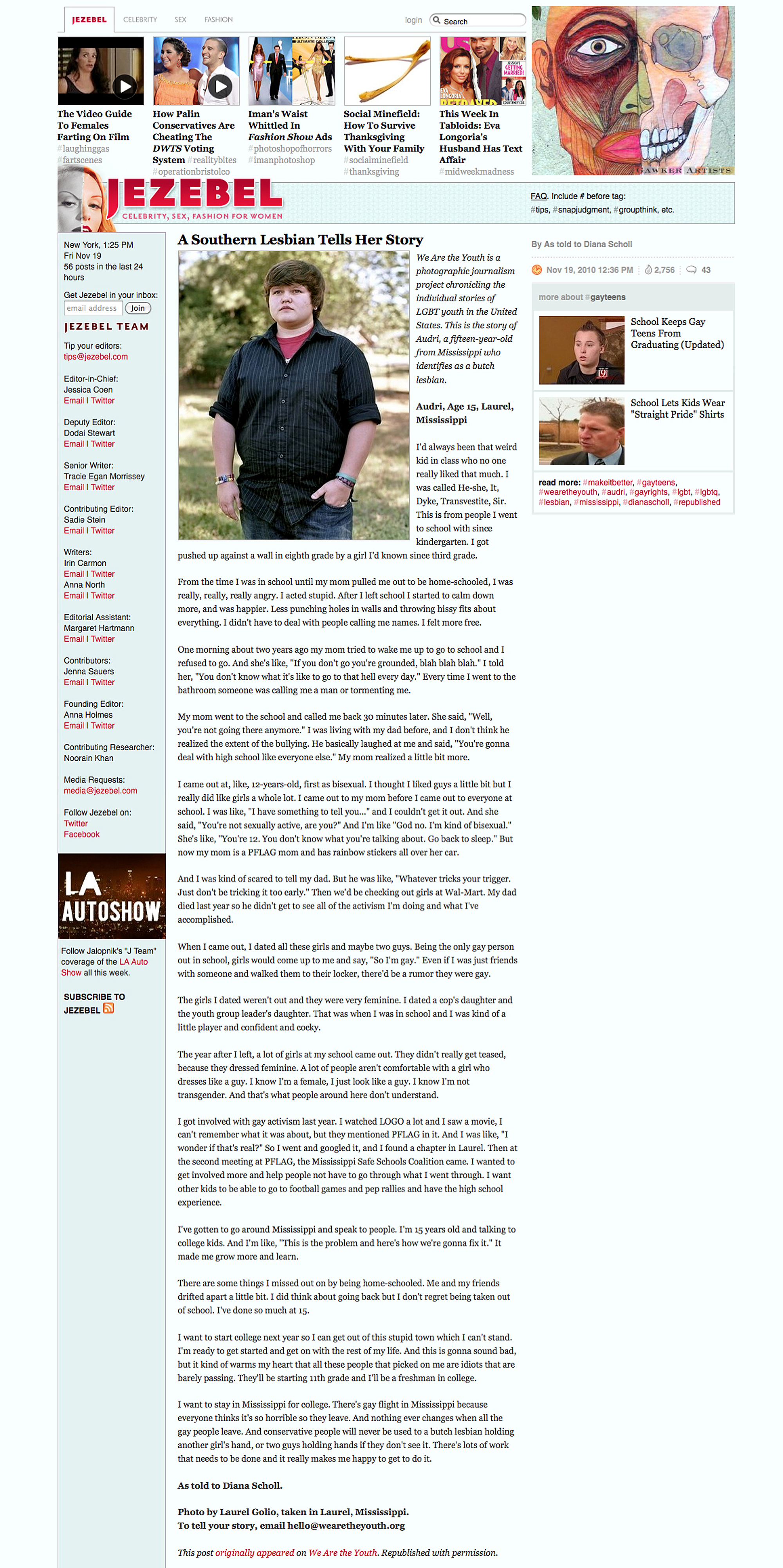
Jezebel, November 2010
Read the Original Story
Sarah Covers Dyke March: NYC PRIDE
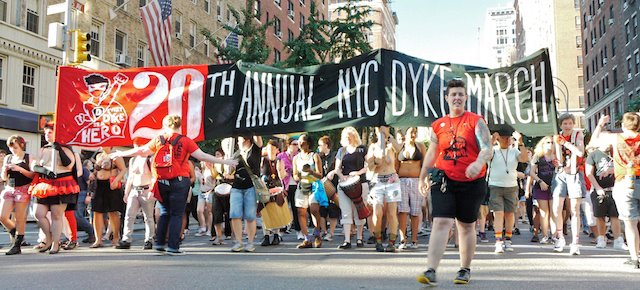
Dyke March, NYC Pride, June 25, 2012
New York, NY
by Sarah Nakano, Photo by Cara Howe
This weekend was a whirlwind! This was my first time in New York during Pride Month so there was a lot of new experiences for me– most notably the 20th Annual NYC Dyke March on Saturday, June 23rd. As a volunteer marshal, my job was to basically just to help block traffic, make sure the march went as planned, cheer people on, high-five people, etc. I had been going to planning meetings occasionally for the past couple months in preparation for Saturday. We marched from Bryant Park, near the New York Public Library to the fountain in Washington Square Park. Overall the march went really well with no obstacles, issues with the police, or fights. Technically the march is a protest without a permit, so it’s illegal and an arrestable action. However, the march has been happening for 20 years now so it’s really become a historic event. The police that I encountered were all pretty supportive and understanding.
At the core of the Dyke March mentality is the idea of protest – against discrimination, harassment, violence, and inequality in various settings: schools, workplaces, family, social, in the streets, etc. It is a declaration of our right to exist, to own the street, to feel liberated and to be oneself in an environment of inclusivity and community. It’s the day that the minority seizes the center. Gabrielle Korn, who is on the planning committee said to the Huffington Post, “It’s important for dykes to claim space and to take up as much space and be as loud and as visible as possible. I think you have to be as public about what you’re fighting for as you can be.” You can read more of what she said here.
My experience of marching was incredibly powerful and surprisingly emotional.This time last year I was living in the Midwest (where I grew up), and on Saturday I was surrounded by 20,000 women taking over Fifth Avenue– what? If you didn’t come march with // support from the side this year, be sure to come next year!
Sarah Reports on The Transatlantic Pride Art Exhibition!

The Annual Transatlantic Pride Art Exhibition, June 21st, 2012
Clifford Chance, New York, NY
by Sarah Nakano
Last Thursday night, Clifford Chance, a law firm in midtown, had an opening reception for their in-office exhibit “Annual Pride Art Exhibition-New York,” featuring 5 portraits of We are the Youth participants. This opening reception gave me the opportunity to see lots of cool art (Cass Bird, Peter Hujar, Elizabeth Bethea, Tee A. Corinne, etc), drink Coca Cola out of a fancy glass, and also witness the wisdom of Jonathan D. Katz.
Before the reception, Katz spoke about specific “queer artworks” and explored the context and details of each piece. Katz was the first tenured faculty in gay and lesbian studies in the U.S, founder of the Harvey Milk Institute, chair of the Department of Lesbian and Gay studies at the City College of San Francisco, co-founder of Queer Nation SF, and is the co-curator of the exhibit ‘HIDE / SEEK’. Basically he’s a certified genius and he’s the king of the middle of
the venn diagram: QUEER and ART.In my opinion the most interesting idea he talked about was the future of “Queer Art.” What is contemporary queer art, where is it headed, what will it look like in the future? From what I understood, he thinks that as LGBTQ issues + people become more widely accepted, queer art will start to focus more on universal themes like love, loss, etc. I was incredibly impressed with Katz’s insights and how incredibly informed he was. What a badass. You can check out his essays, writings, and resume here.
Overall it was a rewarding experience and it was so cool to see Magda, Trevor, Braxton, Isaac, and Patrick chillin on the wall alongside other queer art.
